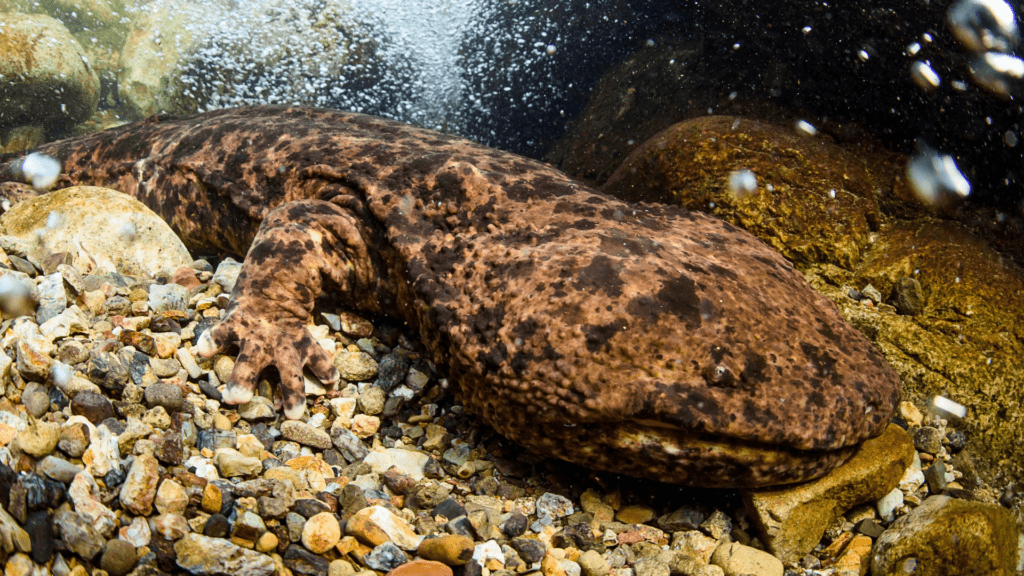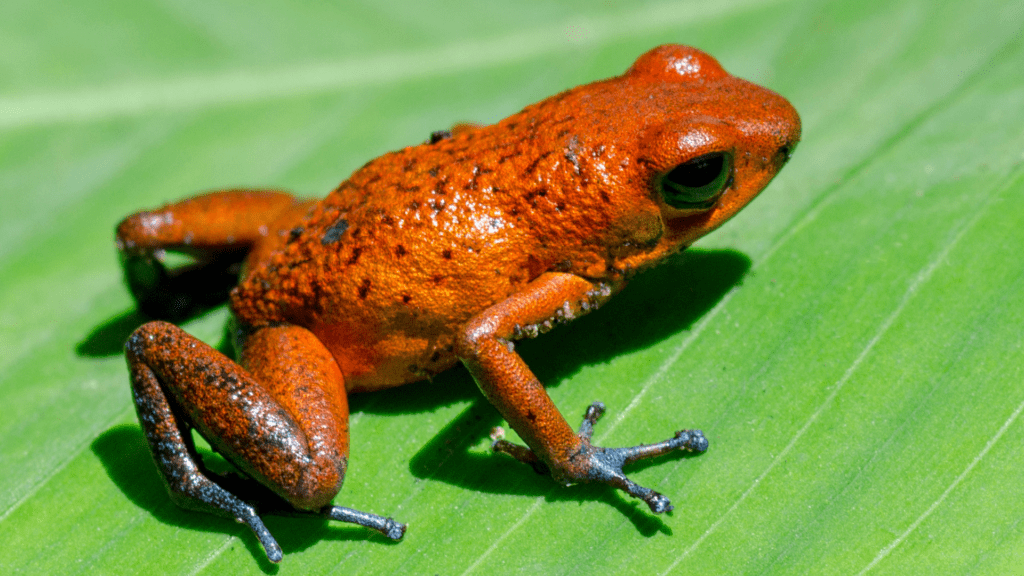The black salamander (Aneides flavipunctatus) is one of the rarest species within the salamander family. Due to habitat destruction and other environmental threats, this species is now near extinction, making it a rare sight in the wild. Despite its limited defensive mechanisms, the black salamander plays a crucial role in its ecosystem as a terrestrial amphibian.
Scientific Classification
- Kingdom: Animalia
- Phylum: Chordata
- Class: Amphibia
- Order: Caudata
- Family: Plethodontidae
- Genus: Aneides
- Scientific Name: Aneides flavipunctatus
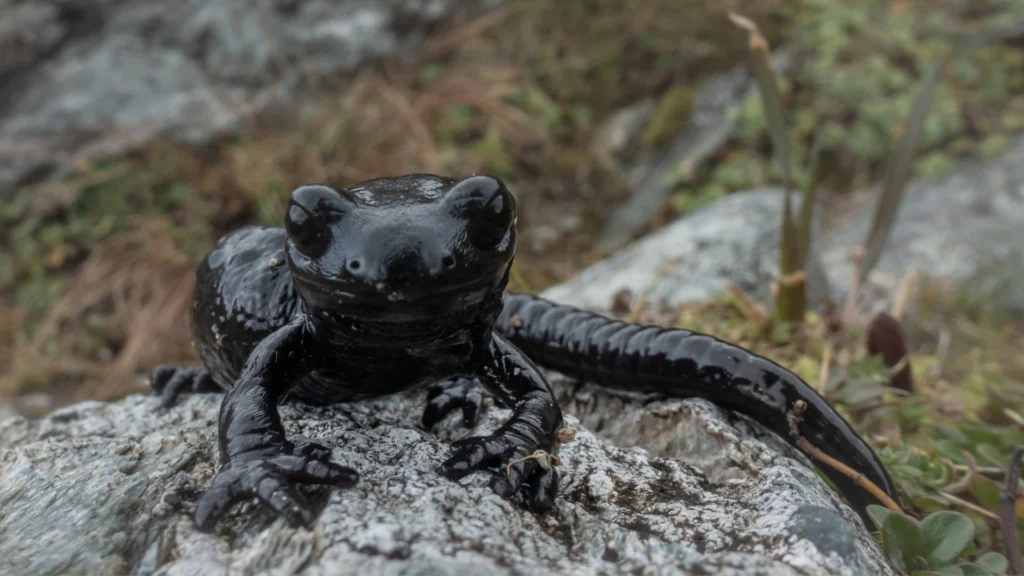
Physical Description
Head
The black salamander has a triangular-shaped head, similar to other species in its family.
Body
This species has a slim, slick body with rounded toe tips.

Size
Adult black salamanders typically measure between 9.8 cm and 16.7 cm in length.
Coloration
As its name suggests, the black salamander is predominantly black, with spotted patterns across its body. The underside is blackish-gray, while juvenile salamanders exhibit pale yellow limbs.
Behavior
- Terrestrial Lifestyle: Black salamanders are land-dwelling amphibians.
- Solitary Nature: They prefer isolation and only seek social interaction during mating season.
- Carnivorous Diet: Like other salamanders, they primarily consume meat.
- Defensive Behavior: Young black salamanders freeze in place when threatened.
- Agonistic Tendencies: These salamanders can exhibit aggressive behavior towards others of their kind.
Diet
Black salamanders are carnivorous and feed on:
- Waxworms
- Earthworms
- Leeches
- Small amphibians
- Newborn mice
- Aquatic insects
Distribution
This species is found in several regions across the United States, including:
- The black salamander (Aneides flavipunctatus) has a geographically limited range, predominantly found in specific regions of the United States. This species prefers cool, moist environments that offer the shelter and conditions necessary for its survival. Its distribution spans several areas, particularly in the western United States, with notable populations in the following regions:
- Northern California: The black salamander is commonly found in the northern parts of California, where it thrives in the moist woodlands and forested areas. These habitats provide the ideal conditions for the salamander’s diet and reproductive needs, including ample hiding spots in logs and undergrowth.
- Southern Oregon: Neighboring Southern Oregon, the black salamander’s population extends into this region, where cool, damp environments similar to those of Northern California support its survival. The presence of mossy rockslides and dense forest floors here offers a stable habitat for the species.
- Santa Cruz Mountains: The Santa Cruz Mountains are another key habitat for black salamanders. The moisture-rich environment, with its secluded woodlands, provides an ideal setting for the salamander to thrive. The relatively undisturbed natural landscapes in this area contribute to its population stability.
- Northern San Francisco Peninsula: This peninsula is home to smaller, but significant populations of the black salamander. In this region, the species is found in the moist, shaded areas along stream banks and in rocky crevices. These habitats help protect the salamanders from extreme heat and predators, offering them a refuge for both feeding and reproduction.
- Southern Sonoma County: In Southern Sonoma County, black salamanders occupy areas with a mix of coastal and forested environments. The microclimates here, with their consistent moisture levels and sheltering vegetation, create a favorable habitat for these amphibians.
- Eastern Trinity Mountains: These mountains in Northern California are another crucial part of the black salamander’s range. The rocky outcrops, combined with dense vegetation, offer shelter and humidity that support the salamander’s life cycle, from juvenile stages through adulthood.
- Mount Shasta: Mount Shasta and its surrounding areas are home to a specific population of black salamanders. The habitat here is characterized by cool temperatures and a mix of woodland and alpine environments, where black salamanders find shelter in rocky crevices and among forest debris.
- Across these regions, the black salamander’s habitat is often situated near freshwater sources such as streams, creeks, and seepages, which provide necessary moisture and breeding grounds. However, due to the limited distribution of these habitats and ongoing environmental threats such as habitat destruction and pollution, the black salamander’s populations are highly localized and vulnerable to further decline.
Habitat
The black salamander’s habitat preferences differ depending on its geographic location, ensuring the species finds suitable conditions to thrive in its varied environments.
- Southern populations: In the southern regions, black salamanders prefer moist woodlands, where the humidity levels are high, and the forest floor provides ample hiding spots. Seepages and stream banks are also favored by these populations, as they offer the necessary moisture and cool conditions that are essential for their survival. These environments provide the salamanders with shelter under rocks, fallen leaves, and decaying logs, where they can avoid predators and maintain optimal hydration levels.
- Northern populations: Black salamanders in northern areas are commonly found in mossy rockslides, where the cool, damp environment supports their need for moisture. Grassy areas, especially those with plenty of shaded spots, offer refuge during hot days. Additionally, coastal prairies, with their combination of humidity and sheltering vegetation, provide an ideal habitat for black salamanders. These northern habitats are rich in the resources needed to sustain the salamanders throughout different stages of their life cycle, from feeding to reproduction.
- The preferred habitats of both southern and northern black salamander populations are characterized by their consistent moisture levels, shaded environments, and protection from the elements. These conditions are vital for the species’ survival, particularly in ensuring they remain hydrated and have access to prey.

Predators
Black salamanders are vulnerable to predation from a range of larger carnivorous and omnivorous species. These predators pose a significant threat to the salamanders, especially due to the salamanders’ limited defense mechanisms. One of the most common predators of black salamanders is the garter snake, which preys upon them in their natural habitats. Garter snakes are known for their ability to hunt and capture small amphibians, including black salamanders, using their agility and quick movements.
In addition to garter snakes, black salamanders may also fall prey to other larger amphibians, birds, and mammals. Many birds, particularly those that hunt near water sources, may see the salamander as a potential food source. Similarly, small mammals that forage in moist woodlands, grassy areas, and near water bodies may also target the salamanders.
Despite these threats, black salamanders have some adaptive strategies to avoid predators, including their ability to remain motionless and use their toxic secretions as a deterrent. Their dark coloration also helps them blend into their environment, making it more difficult for predators to detect them. However, the continued threat from various predators contributes to the black salamander’s vulnerability, particularly as their natural habitats are disrupted by human activities.
Adaptations
Although black salamanders have relatively limited defensive abilities compared to other species, they employ a variety of survival strategies to protect themselves from predators. These strategies help the salamanders evade capture and ensure their survival in their natural habitats.
- Escape: When faced with danger, black salamanders have the instinct to flee from threats as quickly as possible. Their small size and agility allow them to seek refuge under rocks, logs, or dense vegetation, where they can escape predators and avoid being caught. This ability to quickly retreat to a safe location is vital, especially since their habitats often provide plenty of cover for them to hide.
- Immobility: Juvenile black salamanders, in particular, have developed an effective defense mechanism involving immobility. When threatened, they freeze in place, remaining completely still in an effort to mimic death. This behavior, known as thanatosis, can deceive predators into thinking that the salamander is no longer alive, thus sparing it from further attack.
- Toxic Secretions: Black salamanders possess a unique defense mechanism in the form of toxic secretions. When threatened, they release a sticky, poisonous fluid from specialized glands located along their body. This secretion acts as a deterrent, making them unappealing to predators such as snakes and larger carnivores. The toxic fluid serves as a defense mechanism, allowing the salamander to avoid being eaten while still remaining in its habitat.
- These adaptations, while not foolproof, increase the chances of survival for black salamanders in an environment filled with potential threats. Together, they allow the species to evade predators and continue to play its important role in the ecosystem.
Reproduction
- During mating season, male black salamanders actively search for potential mates near water bodies, such as ponds or slow-moving streams. The courtship behavior of male salamanders is a fascinating display of movements designed to attract females. These males engage in tail waving and intricate dancing rituals, often in the vicinity of submerged plants or rocks, to catch the attention of a receptive female. This behavior is part of the male’s effort to demonstrate his fitness and suitability as a mate.
- Once a female has been attracted, the male deposits sperm packets, known as spermatophores, at the bottom of the water. These spermatophores are typically placed on the substrate, where the female collects them using her cloacal opening. After collecting the sperm, the female fertilizes her eggs internally, allowing for a more efficient reproduction process.
- Egg Laying: After successful fertilization, females lay around 100 eggs each breeding season, although they lay only a few at a time. The eggs are jelly-like and adhere to aquatic plants, such as submerged grasses or algae, providing the eggs with both protection and access to necessary nutrients. This method of egg placement ensures that the eggs remain in close proximity to water, which is essential for their development.
- Egg Development: The eggs, once laid, begin their development by sticking to the aquatic plants. Over the course of about 30 days, the eggs hatch into larvae, depending on environmental factors such as temperature and water quality. The larvae, or embryos, will remain in the water, feeding on available microorganisms, until they complete their metamorphosis into juvenile salamanders.
- The reproductive cycle of black salamanders, while similar to other amphibians, is particularly sensitive to environmental changes. The availability of suitable water bodies and habitat conditions directly affects the success of reproduction and the survival of the next generation.
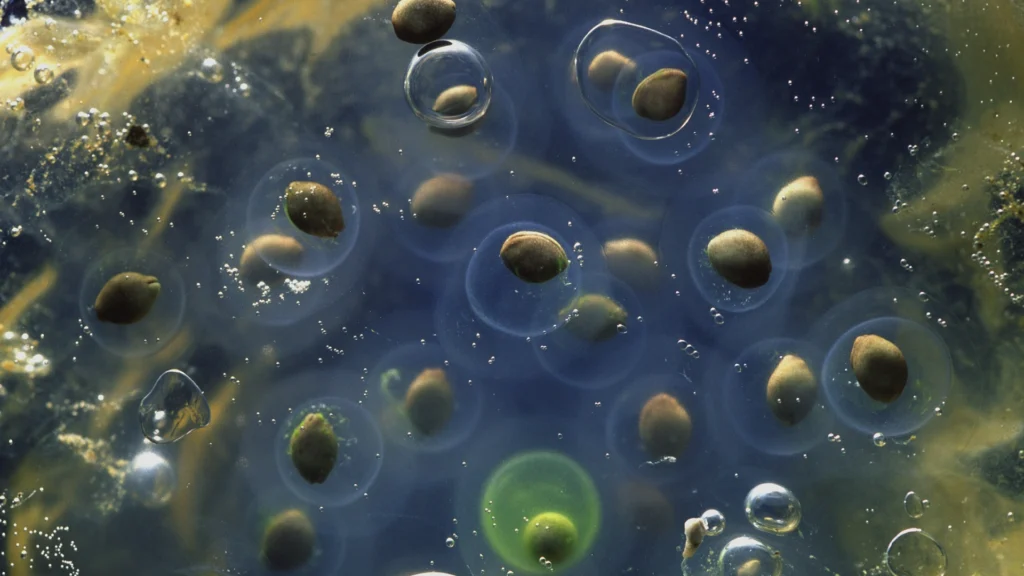
Life Cycle
- Hatchlings: Born with fully developed vision, active mouths, and strong tails.
- Early Development: Limbs begin to develop around 20 days post-hatching.
- Metamorphosis: After 60 days, they undergo transformation, losing their gills and tail fins while developing adult coloration.
- Adulthood: Within two years, they fully mature and seek mates in their first spring season.

Life Span
The lifespan of black salamanders can vary depending on whether they are in captivity or the wild. In both cases, their longevity is influenced by factors such as diet, habitat, and environmental conditions.
- Captivity: In controlled environments such as zoos or as pets, black salamanders can live up to 15 years. This extended lifespan is typically due to the consistent food supply, absence of predators, and regulated conditions that prevent environmental stressors. Captivity allows them to live in optimal conditions, where temperature, humidity, and diet can be monitored and adjusted for their well-being. However, keeping black salamanders as pets requires specialized care to ensure that they thrive over the long term.
- Wild: In the wild, black salamanders face numerous challenges, including predation, habitat destruction, and environmental fluctuations. As a result, their lifespan in natural conditions is typically shorter, with an estimated average of around 12 years. The pressures of living in the wild, where they must constantly find food and avoid predators, can shorten their lives. However, black salamanders that inhabit protected, stable environments may live closer to their potential lifespan.
Subspecies
There are recognized subspecies
- The black salamander is a species with notable diversity within its family, represented by two recognized subspecies. These subspecies vary in appearance and habitat distribution, yet both share the same general characteristics and ecological role. Understanding these subspecies provides insight into the adaptability and evolution of the black salamander species.
- Speckled Black Salamander (A. f. flavipunctatus): This subspecies is distinguished by the presence of pale yellow or white spots scattered across its otherwise dark body. These speckles give the salamander a speckled appearance, helping it blend into its environment. The speckled black salamander is typically found in areas with abundant mossy rockslides, grassy slopes, and coastal regions. Its unique coloration provides some camouflage against predators and harsh environmental conditions. The speckled pattern is a key characteristic that helps differentiate it from its closely related subspecies.
- Santa Cruz Black Salamander (A. f. niger): The Santa Cruz black salamander is almost entirely black, with only small white dots appearing on rare occasions. This subspecies is found predominantly in the Santa Cruz Mountains and other areas of central California. Its darker coloration offers excellent camouflage in the moist woodlands and rockslides typical of the region. Unlike the speckled black salamander, the Santa Cruz subspecies has a more uniform appearance, making it an easily recognizable variant of the species. The lack of significant color variation is believed to be an adaptation to its specific habitat and predation pressures.


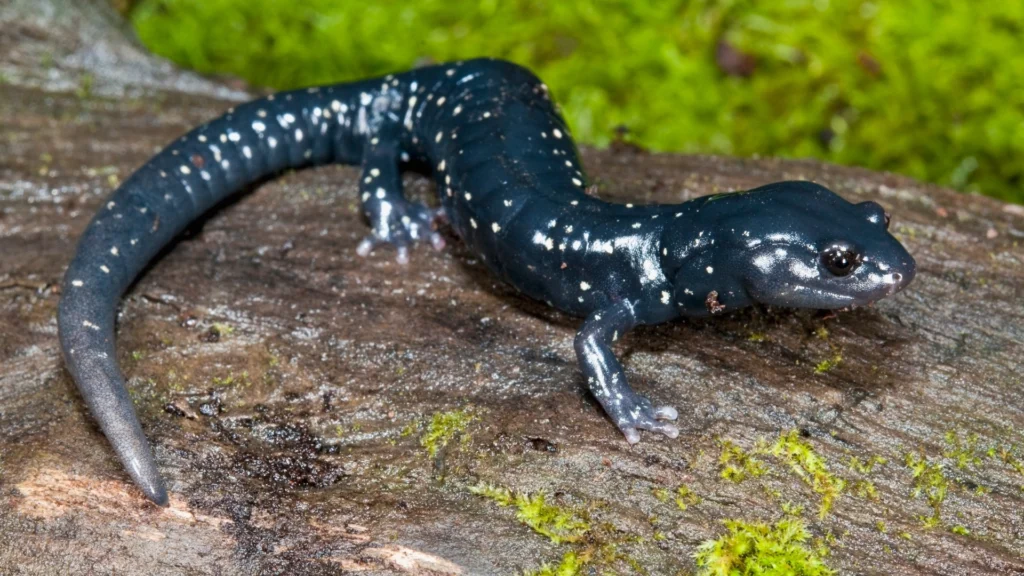
Keeping as Pets
Black salamanders can be kept as Black salamanders can be fascinating and low-maintenance pets when given the proper care and environment. These unique amphibians require specific conditions to thrive in captivity, and understanding their needs is crucial for ensuring their well-being. Whether you’re an experienced amphibian keeper or a first-time pet owner, it’s important to provide an appropriate habitat, diet, and handling routine for black salamanders.
Housing
Creating a suitable enclosure for This black-colored amphibian’s is essential to mimic their natural environment.
- Containers:This black-colored amphibian can be housed in opaque containers or transparent tanks, as long as there are plenty of hiding spots to make them feel secure. It’s crucial to use containers with ventilation holes to maintain good airflow, preventing the buildup of harmful gases.
- Substrate: The ideal substrate should be damp and absorbent to replicate the moist conditions that black salamanders prefer. You can use a mixture of bark, plastic rods, and damp soil as a substrate. Regular misting helps maintain humidity, which is vital for their skin health and overall well-being.
- Hiding Spots: These dark amphibians are solitary and prefer isolation. Providing sufficient hiding spaces within the tank is necessary to give them places to retreat to when they feel threatened or stressed.
Water
These dark amphibians are semi-aquatic creatures that require access to water for hydration and occasional soaking.
- Water Type: It is important to use dechlorinated tap water, spring water, or distilled water in the enclosure. Chlorine and other chemicals found in regular tap water can harm the salamanders, so always ensure the water is free of contaminants.
- Soaking Dish: Provide a shallow dish of water for the salamander to soak and clean itself. This not only helps with hydration but also allows the salamander to regulate its moisture levels.
Diet
The diet of These dark amphibians should consist of high-quality, protein-rich food to maintain their health and activity levels.
- Feeding Frequency: Feed These salamander species every other day, with an emphasis on offering waxworms, earthworms, and tiny newborn mice. These food options closely mirror their natural diet of small invertebrates and amphibians.
- Supplements: Occasionally dusting the food with calcium and vitamin supplements will help prevent nutritional deficiencies and ensure that the salamander receives the essential nutrients required for healthy growth.
Temperature
Maintaining the correct temperature range is vital for the health These salamander species.
- Optimal Temperature Range: The ideal temperature range for black salamanders is between 55°F to 65°F. Temperatures within this range closely mirror the cool, temperate environments these amphibians naturally inhabit.
- Heat Tolerance: While black salamanders can tolerate temperatures up to 80°F, prolonged exposure to higher temperatures can cause stress and health issues. It’s essential to ensure that the habitat remains within a consistent temperature range for the salamander’s comfort and well-being.
Handling
Handling These black-colored amphibians requires care and consideration, as their skin is delicate and sensitive.
Gentle Handling: When handling black salamanders, it’s important to be gentle. They should be held carefully and minimally, as excessive handling can cause stress and even injury.disruptions.
Skin Care: Human skin contains salts that can be harmful to salamanders. Always wash your hands with chlorine-free water before handling them, ensuring there is no residue from lotions, soap, or chemicals.
Interesting Facts
- One of the rarest salamander species.
- Highly solitary creatures.
- Males perform courtship dances during mating.
- Sensitive to salt and chlorine.
- Newly hatched salamanders are born with strong tails, active mouths, and good vision.
- Juveniles have gills and tail fins, which disappear during metamorphosis.
- Parental care is absent; eggs hatch unattended.
- Adult salamanders flee from danger, while juveniles play dead.
Conclusion
The black salamander is a fascinating and rare species that faces significant threats due to habitat destruction. Understanding its behavior, habitat, and conservation needs is essential to ensuring its survival in the wild. With proper conservation efforts, this unique amphibian can continue to thrive for future generations.
faq’s
1. What is the scientific name of the Black Salamander?
Aneides flavipunctatus
2. What type of habitat does the Black Salamander prefer?
Deciduous forests, coastal prairies, moist woodlands, rocky slopes, and stream banks
3. Who are the main predators of the Black Salamander?
Garter snakes and other larger carnivorous species
4. What are the Black Salamander’s defense mechanisms?
Secreting a toxic, sticky substance, fleeing from predators, and remaining motionless to avoid detection
5. What does the Black Salamander eat?
Waxworms, earthworms, leeches, aquatic insects, and small amphibians
6. How do Black Salamanders reproduce?
Males perform a courtship dance, deposit sperm in water, and females collect it for fertilization
7. What is the lifespan of a Black Salamander?
captivity
Around 12 years in the wild and up to 15 years in
8. When do Black Salamanders undergo metamorphosis?
Around 60 days after hatching, when their gills and tail fins disappear
9. Why is the Black Salamander listed as “Near Threatened”?
Due to habitat destruction, deforestation, and water pollution
10. What distinguishes the two subspecies of Black Salamanders?
A. f. flavipunctatus has pale yellow or white spots, while A. f. niger is almost entirely black
